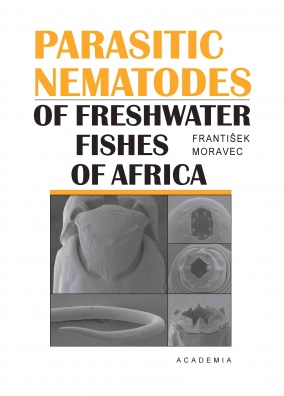Zařazeno v kategoriích: JAZYKOVÁ LITERATURA, OSTATNÍ
Parasitic nematodes of freshwater fishes of Africa
Moravec František
ISBN
9788020029249
EAN
9788020029249
Nematodes (Nematoda) represent one of the most important groups of fish parasites. Many species are highly pathogenic, often causing serious diseases or even death to their fish hosts; some of them are transferable to other animals of economic importance or to man. The significance of recognizing these parasites increases with the recent development of aquaculture in many countries and with transcontinental transfers of fish. A prerequisite for developing effective control measures in fish culture is the exact identification of these parasites as well as the knowledge of their frequently complicated host – parasite – relationships. Besides its practical importance, the study of fish nematodes in Africa is also significant from the viewpoint of the recognition of biodiversity in this zoogeographically remarkable continent, nowadays often with threatened unique ecosystems. This book represents the first monographical elaboration of nematodes parasitizing inland fishes in Africa.
The monograph is meant to provide basic data on all hitherto known fish nematodes of Africa, enabling their species determination. It is divided into the following sections: introductory chapters including general morphological, biological and ecological data on fish nematodes, their pathogenicity and methods of study; a systematic part; and a host – nematode parasite list. The characteristics of the individual taxonomic groups, together with descriptions and illustrations for each nematode species occurring in fishes as adults and as larvae are provided. The keys provided will enable the reliable identification of these organisms from the territory of Africa. For each individual parasite species, data are provided on the range of their hosts, their localization, distribution and, if available, on their life cycles and biology. Altogether, 120 nematode species belonging to 47 genera and 21 families are dealt with in this way. The reference list includes about 380 papers.
This book is intended primarily for parasitologists, biologists, veterinarians, workers in fisheries and university students, although it will also be of interest to ichthyologists, museum curators and those engaged in nature conservation.
Ostatní s tímto titulem kupují:
-
Položka byla přidána do košíku.





